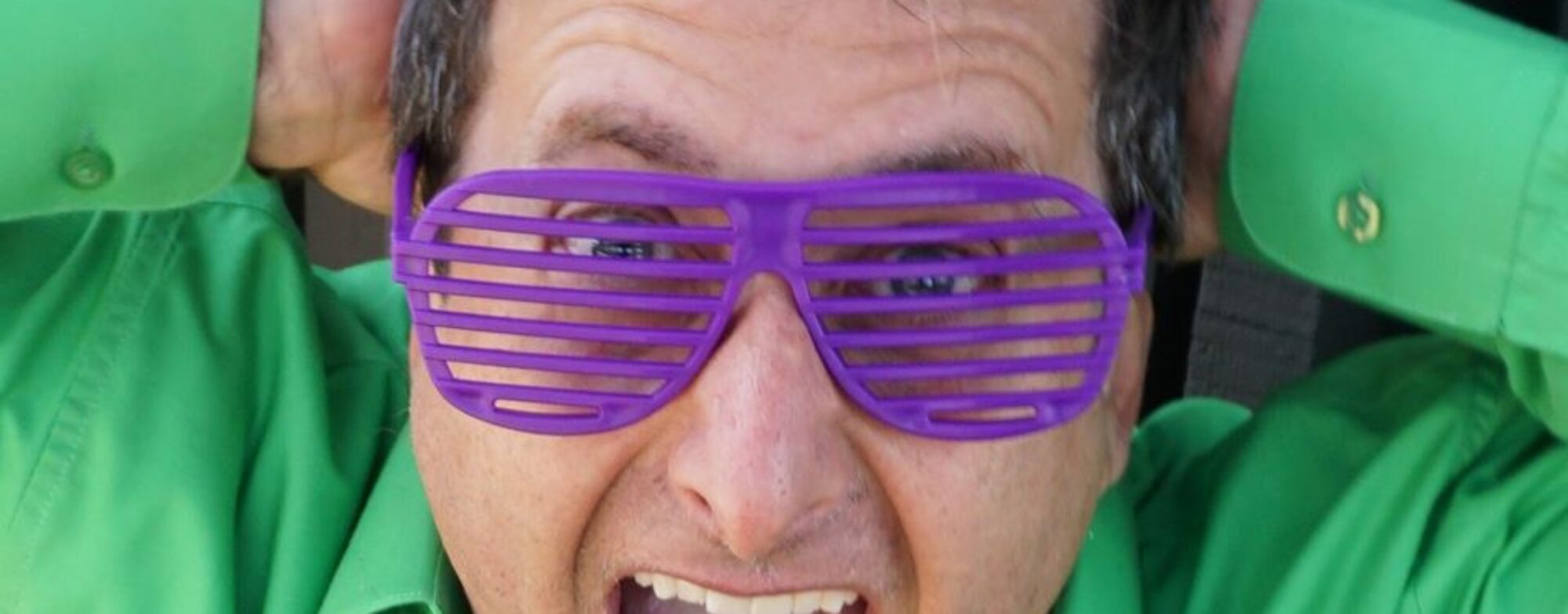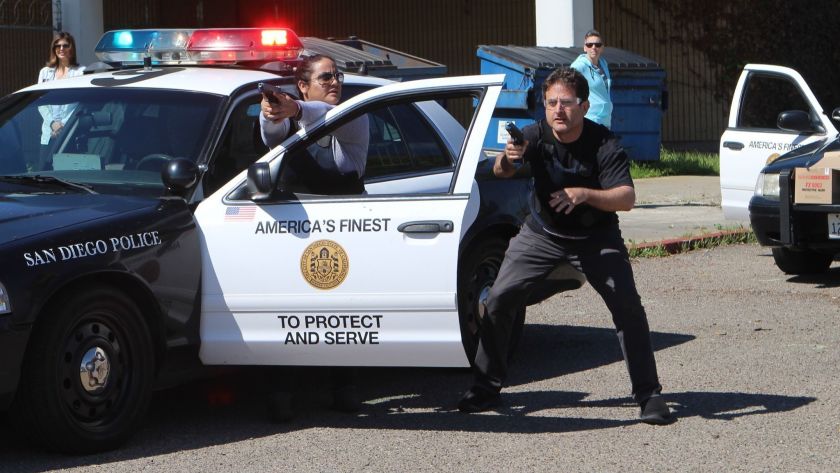By COREY LEVITAN
The suspect has been engaged by my partner and me. In the white sedan stopped in front of us is a male who matches the description of someone who, we were informed, just robbed a bank with a loaded gun, from which he fired several rounds into the bank’s ceiling.
As my partner calls for backup, I draw my gun and yell at the man to exit his car with his hands in the air.
None of this is real, of course — including our guns, which are blue plastic replicas with triggers that don’t move. But nobody told my heart, which is racing furiously. And that time-dilation thing is happening where five seconds feels like 20 minutes.
Today, 80 San Diego residents have enrolled in Inside SDPD, a free experience offered three times a year by the San Diego Police Foundation at the Naval Training Center in Point Loma.
San Diego Chief of Police David Nisleit, who spoke as part of the pre-training classroom orientation, described it as “a day walking in the shoes of San Diego police officers — to open the doors and give the public an exposure to some of the things that we do, so people understand the job a little bit more and don’t get their ideas from TV.”
In addition to the traffic stop, Inside SDPD also provides instruction in SWAT techniques, force-option simulation, working with K-9 officers and firing Tasers. The 80 members are split into five groups of 16 to cycle through the sessions, which last a total of three hours.
My team includes Aaron Brennan, the La Jolla firefighter currently running for District 1 City Council, who said the program was recommended by a friend of his who found it “pretty eye-opening.”
“I work alongside SDPD all the time, but that’s different because I’m focused on my job,” Brennan said. “Now, I want to learn about theirs.”
Although we knew we wouldn’t get hurt, turning every sharp corner in the SWAT and K-9 stations — knowing that some threat was present but not knowing what it was — produced some surprisingly real anxiety. And that anxiety, we were told by SDPD training officer Ken Kries during orientation, is the last thing cops can afford to pay attention to when making split-second decisions about how to react.
According to Kries, there are 1,000 fatal shootings by officers in the U.S. every year, some of which are unfortunately avoidable.
“And we’re always working on that,” Kries said. “You’re able to make a super-sound judgement after the fact, which you can’t do. A police officer judges in the moment they use force.”
It was a point best hammered home during forced-option simulator training, when every trainee who volunteered decided to shoot at a male in a warehouse shown lunging toward them on a giant video screen.
“What was that guy armed with?” asked instructor Michael Belz. (The answer: nothing.) “And what will the headline be tomorrow?” Belz continued. (The answer: “Officer Shoots Unarmed Man.”)
Back at the dangerous traffic stop, the bank-robbery suspect begins to exit his car.
Inside SDPD enrollee Carol Rios and I already know what the suspect will do from watching the scenario play out with two trainees before us: He will start firing at us almost immediately — which is why I will not let him do that.
The suspect exits his vehicle — only the gun is pointed at his own head. What?!
Rios and I yell at him to drop the gun, but the suspect does not comply. This is a tough call. Does this man deserve to die for threatening only himself?
The use of force is justified, I decide. I yell “bang-bang!” while aiming at his torso, as previously instructed, and he goes down.
My call was correct, says Levi Harbin, safety coordinator for the San Diego Regional Police Academy, who portrayed the bank-robbery suspect.
“If someone is suicidal, they’re also homicidal,” Harbin explains, demonstrating by switching the target of his fake gun from his own head to mine in a fraction of a second.
“If they put the gun down, we’ll talk to them, we’ll get all the resources,” Harbin says. “But at some point, you’re going to have to address the person walking towards you with a gun.”
Harbin says the point I chose, however, was inadvisably late. I let the suspect walk behind us, Harbin explains, where we lost the cover of our police car. (I hadn’t noticed.) Also, I let him inch closer to us, increasing his odds of landing a fatal shot.
“It’s not easy as it looks on TV, is it?” Harbin asks.

